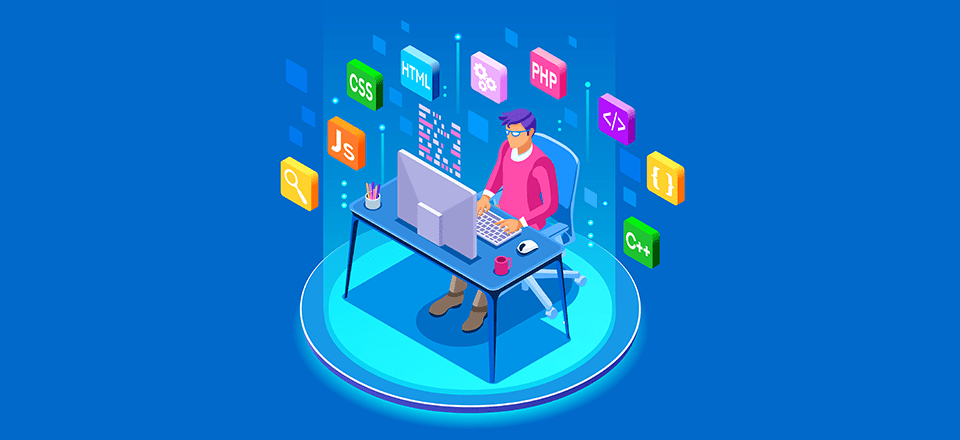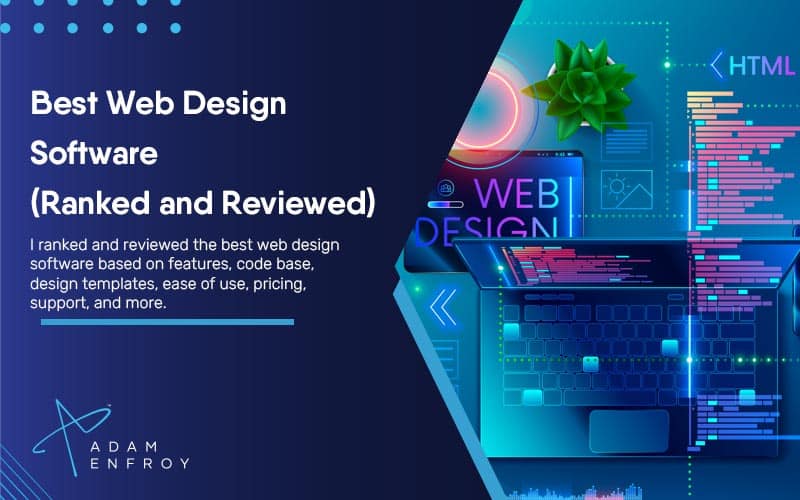All Categories
Featured
Table of Contents
- – The Leader In Website Design – Squarespace Tip...
- – Otc Web Design Girdwood, Alaska - Web Design ...
- – Powderkeg: Web Design Madison, Wi Tips and Tr...
- – Web Design Ledger: Homepage Tips and Tricks:
- – Top Web Design Agencies Ranked - 2022 Reviews...
- – The Leader In Website Design – Squarespace Ti...
- – Web Development Bachelor's Degree - Full Sai...
- – Web Design Projects - Behance Tips and Tricks:
- – Top Web Design Agencies Ranked - 2022 Review...
- – Collaborate & Create Amazing Graphic Design ...
- – Arch Web Design: Top-rated Web Design Agency...
The Leader In Website Design – Squarespace Tips and Tricks:
Quick summary Usability and the energy, not the visual style, determine the success or failure of a website. Considering that the visitor of the page is the only person who clicks the mouse and for that reason decides whatever, user-centric style has established as a standard approach for effective and profit-oriented web style - web design frederick md.
and the utility, not the visual design, determine the success or failure of a website. Given that the visitor of the page is the only individual who clicks the mouse and therefore chooses everything, user-centric design has actually ended up being a standard method for successful and profit-oriented web style. If users can't utilize a function, it might as well not exist.
g. where the search box should be put) as it has actually already been performed in a number of articles; rather we concentrate on the approaches which, utilized appropriately, can result in more sophisticated design decisions and simplify the process of perceiving provided information. Please discover that you may be thinking about the usability-related short articles we've published before: Principles Of Excellent Site Design And Effective Web Style Guidelines, In order to use the principles properly we initially require to comprehend how users engage with sites, how they believe and what are the standard patterns of users' habits.
Otc Web Design Girdwood, Alaska - Web Design & Google ... Tips and Tricks:
Visitors glance at each brand-new page, scan a few of the text, and click on the very first link that captures their interest or slightly looks like the thing they're looking for. There are big parts of the page they don't even look at. The majority of users look for something fascinating (or useful) and clickable; as quickly as some promising candidates are found, users click.
If a page provides users with premium content, they are ready to jeopardize the material with ads and the design of the site. This is the reason that not-that-well-designed websites with high-quality material get a great deal of traffic over years. Content is more important than the design which supports it.

Users do not read, they scan. Notice how "hot" locations abrupt in the middle of sentences. This is typical for the scanning procedure. Really easy concept: If a website isn't able to satisfy users' expectations, then designer failed to get his task done appropriately and the business loses money. The greater is the cognitive load and the less instinctive is the navigation, the more willing are users to leave the website and look for alternatives.
Powderkeg: Web Design Madison, Wi Tips and Tricks:
Neither do they scan webpage in a direct style, going sequentially from one site area to another one. Instead users satisfice; they select the first reasonable choice. As quickly as they find a link that seems like it might lead to the goal, there is a great possibility that it will be instantly clicked.
It doesn't matter to us if we comprehend how things work, as long as we can use them. If your audience is going to act like you're creating billboard, then design great signboards." Users wish to be able to control their browser and depend on the constant information presentation throughout the site.
If the navigation and site architecture aren't instinctive, the variety of question marks grows and makes it harder for users to comprehend how the system works and how to obtain from point A to point B. A clear structure, moderate visual hints and quickly recognizable links can assist users to find their course to their objective.
Web Design Ledger: Homepage Tips and Tricks:

claims to be "beyond channels, beyond items, beyond circulation". What does it indicate? Given that users tend to check out websites according to the "F"-pattern, these three declarations would be the first components users will see on the page once it is filled. The design itself is easy and intuitive, to understand what the page is about the user needs to search for the answer.
Once you've accomplished this, you can communicate why the system is helpful and how users can take advantage of it. People will not utilize your web site if they can't find their way around it. 2. Don't Squander Users' Persistence, In every project when you are going to provide your visitors some service or tool, try to keep your user requirements minimal.
First-time visitors want to, not filling long web kinds for an account they might never use in the future. Let users explore the site and find your services without requiring them into sharing private information. It's not affordable to require users to go into an email address to test the feature.
Top Web Design Agencies Ranked - 2022 Reviews - Clutch.co Tips and Tricks:
And that's what you desire your users to feel on your web website. The registration can be done in less than 30 seconds as the type has horizontal orientation, the user does not even need to scroll the page.
A user registration alone is adequate of an obstacle to user navigation to cut down on incoming traffic. Handle To Focus Users' Attention, As websites supply both static and dynamic material, some aspects of the user interface attract attention more than others do.
Focusing users' attention to specific areas of the website with a moderate usage of visual aspects can assist your visitors to receive from point A to point B without thinking about how it really is supposed to be done. The less concern marks visitors have, the they have and the more trust they can establish towards the business the website represents.
The Leader In Website Design – Squarespace Tips and Tricks:
4. Pursue Function Direct exposure, Modern website design are generally slammed due to their method of directing users with aesthetically appealing 1-2-3-done-steps, large buttons with visual impacts etc. From the style point of view these components in fact aren't a bad thing. On the contrary, such as they lead the visitors through the website content in a really basic and user-friendly way.
The website has 9 primary navigation options which are noticeable at the first look. What matters is that the content is well-understood and visitors feel comfy with the method they interact with the system.
Instead a cost: just what visitors are looking for. An optimum option for effective writing is touse brief and concise expressions (come to the point as rapidly as possible), usage scannable layout (classify the material, utilize numerous heading levels, utilize visual elements and bulleted lists which break the flow of uniform text blocks), usage plain and objective language (a promotion doesn't require to sound like ad; give your users some reasonable and unbiased reason why they need to use your service or remain on your website)6.
Web Development Bachelor's Degree - Full Sail University Tips and Tricks:
Users are seldom on a website to take pleasure in the design; in addition, for the most part they are looking for the info regardless of the design - web design frederick md. Strive for simpleness rather of intricacy. From the visitors' perspective, the best site design is a pure text, without any advertisements or additional content obstructs matching precisely the question visitors utilized or the material they've been searching for.
Finch plainly provides the info about the site and provides visitors an option of alternatives without overcrowding them with unneeded material. Not only does it help to for the visitors, however it makes it possible to perceive the info provided on the screen.
Complex structures are harder to check out, scan, analyze and deal with. If you have the choice in between separating two style sections by a visible line or by some whitespace, it's generally better to use the whitespace option. (Simon's Law): the much better you manage to supply users with a sense of visual hierarchy, the simpler your material will be to view.
Web Design Projects - Behance Tips and Tricks:
The very same conventions and rules must be applied to all elements.: do the most with the least quantity of hints and visual components. Four major indicate be considered: simplicity, clearness, distinctiveness, and focus. Simplicity includes just the aspects that are most crucial for interaction. Clearness: all parts ought to be created so their significance is not uncertain.
Conventions Are Our Pals, Conventional design of site aspects doesn't lead to a dull web site. In reality, as they lower the finding out curve, the need to determine how things work. It would be a functionality problem if all sites had various visual presentation of RSS-feeds. That's not that various from our routine life where we tend to get used to fundamental concepts of how we arrange data (folders) or do shopping (placement of items).
understand what they're anticipating from a website navigation, text structure, search positioning etc. A typical example from use sessions is to translate the page in Japanese (presuming your web users do not know Japanese, e. g. with Babelfish) and provide your functionality testers with a task to discover something in the page of different language.
Top Web Design Agencies Ranked - 2022 Reviews - Clutch.co Tips and Tricks:
Steve Krug suggests that it's better to, however take benefits of conventions when you don't. 10. Test Early, Test Typically, This so-called TETO-principle ought to be used to every web design project as usability tests typically provide into significant issues and concerns associated with an offered layout. Test not far too late, not insufficient and not for the wrong reasons.
Some crucial points to remember: according to Steve Krug, and testing one user early in the job is much better than testing 50 near the end. Accoring to Boehm's first law, errors are most regular throughout requirements and style activities and are the more costly the later they are eliminated.
That suggests that you develop something, test it, repair it and then evaluate it again. There might be issues which haven't been discovered throughout the first round as users were virtually obstructed by other issues.
Collaborate & Create Amazing Graphic Design For Free Tips and Tricks:

This holds for designers also. After you have actually worked on a site for couple of weeks, you can't observe it from a fresh viewpoint anymore. You understand how it is constructed and for that reason you understand precisely how it works you have the knowledge independent testers and visitors of your website wouldn't have.
It can be connected to other locations such as graphic style, user experience, and multimedia arts, however is more aptly seen from a technological standpoint. It has actually ended up being a big part of people's daily lives. It is difficult to envision the Internet without animated graphics, various designs of typography, background, videos and music.

During 1991 to 1993 the Internet was born. Text-only pages might be viewed using an easy line-mode internet browser. In 1993 Marc Andreessen and Eric Bina, developed the Mosaic web browser. At the time there were several web browsers, nevertheless the bulk of them were Unix-based and naturally text heavy. There had actually been no integrated method to graphic design elements such as images or sounds.
Arch Web Design: Top-rated Web Design Agency For Saas ... Tips and Tricks:
The W3C was created in October 1994 to "lead the Internet to its complete capacity by establishing typical protocols that promote its advancement and ensure its interoperability." This discouraged any one business from monopolizing a propriety internet browser and shows language, which could have modified the result of the World Wide Web as a whole.
As this has taken place the technology of the web has also proceeded. There have actually also been substantial changes in the way people utilize and access the web, and this has altered how websites are designed. Given that the end of the browsers wars [] new internet browsers have been released. Much of these are open source implying that they tend to have faster development and are more supportive of new requirements.
Learn more about Lovell Media Group LLC or TrainACETable of Contents
- – The Leader In Website Design – Squarespace Tip...
- – Otc Web Design Girdwood, Alaska - Web Design ...
- – Powderkeg: Web Design Madison, Wi Tips and Tr...
- – Web Design Ledger: Homepage Tips and Tricks:
- – Top Web Design Agencies Ranked - 2022 Reviews...
- – The Leader In Website Design – Squarespace Ti...
- – Web Development Bachelor's Degree - Full Sai...
- – Web Design Projects - Behance Tips and Tricks:
- – Top Web Design Agencies Ranked - 2022 Review...
- – Collaborate & Create Amazing Graphic Design ...
- – Arch Web Design: Top-rated Web Design Agency...
Latest Posts
Web Design Blog - Webdesigner Depot Webdesigner Depot Tips and Tricks:
Penner Home - Durham Web Design - Penner Web Design ... Tips and Tricks:
Top Web Design Companies - Find Web Designers Here Tips and Tricks:
More
Latest Posts
Web Design Blog - Webdesigner Depot Webdesigner Depot Tips and Tricks:
Penner Home - Durham Web Design - Penner Web Design ... Tips and Tricks:
Top Web Design Companies - Find Web Designers Here Tips and Tricks: